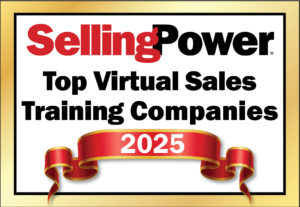The Power of Sales Enablement to Drive Seller Success

Would you believe that sales reps don’t know the answer to 40% of the product questions customers ask? Or that 70% of salespeople frequently stray “off message” when they sell?
These stats are startling and indicative of a bigger problem for sales organizations: Reps aren’t properly trained to handle sales calls and buyer interactions. This lack of training may be an issue you’re currently facing with your sales teams.
Sellers are only as good as the coaching and resources they receive. If they’re not adequately supported and trained, they won’t succeed at selling. That’s why sales enablement – the ongoing process of providing reps with the training, content, and tools they need to sell effectively – has become the solution businesses are turning to for help.
The eye-opening stats above were unearthed in a recent Allego report, Who Owns Sales Enablement, where we surveyed more than 300 B2B sales and marketing leaders to gauge the state of sales enablement. Results showed that, even as a function still in its infancy at many companies, sales enablement has already positively impacted organizations with a dedicated program.
Let’s take a look at some key findings:
Organizations Without a Formal Sales Enablement Program Struggle with Rep Training and Meeting Revenue Goals
- Sales leaders are twice as likely to report that rep training is a problem.
- According to 47% of companies, revenue goals are missed due to inadequate seller training.
- Reps have difficulty easily accessing sales content.
- Organizations have reps that aren’t consistently representing their product and brand as expected.
Organizations with a Formal Sales Enablement Program Have More Confident Reps and Hit Revenue Goals
- Companies are 10 times more likely to hit their revenue goals.
- Reps are more confident in their sales abilities, with 73% more effective at understanding and presenting new products and features.
- Sales managers believe their revenue would drop more than 30% without an effective sales enablement program.
- Sellers are six times more likely to say it’s easy for them to get the sales materials they need to sell effectively.
Based on these findings, you can surmise that you’re better off having a sales enablement program than not having one. Implementing a formal sales enablement program is the difference between sales success and failure because it provides reps with continuous access to training, content, and tools they need to optimize buyer interactions and confidently articulate their company’s products.
Three Ways to Maximize the Effectiveness of Your Sales Enablement Program
1. Focus on Seller Training
With the move to hybrid selling, training reps to engage with buyers regardless of the environment has become imperative. Common pain points reps face include not effectively selling to customer needs and not receiving enough content to sell adequately. Sales enablement helps bridge these gaps by focusing on product and skills training.
To get the most out of a sales enablement program, first identify areas where your team needs extra assistance. That could include retaining product information and learning competitive positioning. Then, your program can focus on supporting reps in these areas. For example, if a rep is struggling to retain product information, you could incorporate flash drill quizzes into your program as a method to reinforce new material. With these quizzes, reps can showcase their understanding of a product by picking the correct answers. If they don’t, keep sending them questions on that particular product until they master it.
2. Implement Peer-to-Peer Knowledge Sharing
Well-rounded sales reps don’t exclusively learn from their managers; they learn from their peers too. These peers, such as subject matter experts and top performers, carry expertise and experiences from successful sales that reps can glean from and apply to their own client calls. That’s why it’s crucial for sales enablement programs to implement peer-to-peer knowledge sharing.
If a rep has issues navigating buyer interactions, peer-to-peer knowledge sharing can be a way to learn from top-performing sellers. Ask your top sellers to record short videos of themselves navigating a specific challenge or delivering a presentation, then share the videos with the sales team as a training tool. Your sales enablement program could incorporate peer-to-peer knowledge sharing along with formal coaching for salespeople to get the most impactful training possible and overcome their selling challenges.
3. Empower Sellers with Effective Sales Content Management
Sales content is essential because it provides the just-in-time learning materials reps need to be successful at every phase of the sales cycle. Unfortunately, ineffective content management can prevent sales materials from being helpful at all. Common challenges include sellers not using content because it misses the mark for real-world selling situations, sellers using content at the wrong time than intended, and content not being up to date with changing buyer demands. On top of that, there may be too much content – making it difficult for reps to find what they need when they need it.
Your sales enablement program should solve these inefficiencies by prioritizing effective sales content management that makes content easily accessible, gives it the proper context for how and when to use it, and ensures it’s what sellers require to successfully close deals. One way to add context and prevent content from being used incorrectly is to have marketers (the department that typically creates sales collateral) explain the asset’s intent through video. That way, there are no discrepancies between what the asset is, who it should be used for, or when it should be used.
Use your sales enablement program to manage the resources your team requires. Ask sellers for feedback and take note of existing materials by analyzing if they’re well organized, easily consumable, and helping reps progress deals. If they’re not, then you’ll know where to adjust.
Sales enablement has proven to be an essential function for any business. It prioritizes giving reps the constant training they need to close more deals. Let sales enablement be the change that leads your sales teams to success.
Mark Magnacca is president and co-founder of Allego, and helps sales leaders shorten sales cycles and distribute their best ideas faster. He is the author of So What? How To Communicate What Really Matters to Your Audience, and co-author of Mastering Virtual Selling: Orchestrating Sales Success.
Get our Enewsletter
Get the latest sales leadership insight, strategies, and best practices delivered weekly to your inbox.
Sign up NOW →Popular Articles
- How Sales Leaders Can Use OKRs to Drive Consistent Performance
- Thriving in Turbulence: How Smarter Sales Strategies Can Stabilize Your Business
- Turning Conversations into Conversions: How to Drive More Sales from In-Person Events
- Turning Quiet Periods into Opportunities: Smart Strategies for Small Business Success
